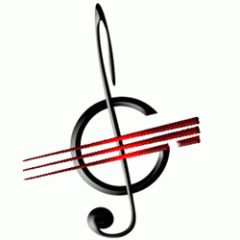Hi
Have you been playing the piano for a while? Maybe a month, or maybe 12 months? Are you finding that the bass clef, and therefore anything to do with the left hand is a drag? Well, you are in good company, as pretty much anyone who learns to play the piano struggles with this. The main reason for this is that on the piano you have to read two clefs at the same time, and that makes it rather difficult. Most other instruments (apart from the organ, or harp, for example) have just one clef, and you just have to read one note at a time. On piano we have to read several notes on the one clef (treble clef), and then the same again on a completely different clef, which is kinda similar, but everything is out compared to the treble clef. Jeez, enough to give anyone the heebie geebies. So it’s just not easy, and that part we just can’t change.
The other thing you may notice with the piano is that you never seem to have enough eyes to be able to look at:
1) Your fingers
2) The treble clef
3) The bass clef
Ideally you’d be a chameleon with 3 eyes that could train each eye on each section separately, but that sadly can’t happen. So what’s the trick? Well there is no trick, but several strategies you can use to make it work:
1) Learn the damned bass clef well. There is no way around it, you have got to know it. Practice just the left hand for maybe 10 min at the start of every practice session. Also, and this has worked wonders of many of my students, go to:
www.musictheory.net
… and go to Exercises and there you can set yourself exercise to read bass clef notes. Where this service is really handy is that you can specify the range you want to test yourself at – and this is where you can learn quickly. Start off with a really small range, say C below middle C up to G, no more, and no sharps or flats. Do that for a few days and you’ll know those 5 notes really well. Then just add in one more extra note, so expand the range from C to A. Do that for a few days, and so on. Gradually increase the range, and within a few weeks you’ll find that you can suddenly read the bass clef so much better.
2) Look ahead when playing. This is so important when you play the piano, as there is so much going on, you need to look ahead a bit to know what is coming, otherwise you can find yourself surprised by the number of notes in the next bar.
3) There is no rule of whether you should look at the music, or just your fingers. Anyone who tells you should look at the music all the time, or conversely look at your fingers all the time, is talking rubbish. Look at what you feel you need to look at at that point in time – your brain will tell you which needs most attention, and if you need to move your hands, your brain will tell you to look at them, so do that!
4) Part-memorise the left hand. There is usually less going on in the left hand, so it’s a good idea to part-memorise it, so what you pick up with your peripheral vision, or the odd glance onto the bass clef will suffice to be able to play the notes.
5) It’s ok to memorise everything. Yep, if you don’t need the music anymore, then don’t use it. Actors don’t go on stage with a script, do they?
6) Get someone to teach you the rudiments of functional harmony – that way you will actually understand what the music is doing, so rather than reading loads of dots, that actually have no meaning, you will understand why this chord is there, and what chord it is, and why it is followed by this other chord, and that the melody in the right hand is mostly just the chord tones you are playing in the left hand etc etc.
Follow some of the above, and piano playing might become a less stressful undertaking. After all, we want you to love playing the piano.










![roland-vp770-vocal-and-ensemble-keyboard-[2]-498-p](https://www.greatscores.com/blog/wp-content/uploads/2014/03/roland-vp770-vocal-and-ensemble-keyboard-2-498-p-300x199.jpg)
